
The cold and never-ending snowstorm swirls around the player as they walk through the increasing snow. Large wolves, almost as tall as a person, hide just beyond the lantern light before attacking with teeth and claws. The player enters a small town, looking for shelter from the storm, only to discover a dark and twisted secret that could bring about the end of the world. This is Diablo 4, and Blizzard's gory and dark-Gothic story is just starting.
The isometric, top-down style of action roleplaying games has been effectively used in various titles over the years, such as Lost Ark, Planescape: Torment, Hades, Path of Exile, Titan Quest, and more. However, for many older gamers, Diablo and Diablo 2 were among the first games to establish the 2.5D style as a favorite genre. It was a unique mix of RPG and action combat that quickly gained popularity. The stories were grim and apocalyptic, with the fate of the world known as Sanctuary often hanging in the balance. Players battled hordes of demons, and sometimes angels, while learning about the greater and lesser evils that constantly threatened the world. The fears instilled from learning about this world hold true in Diablo 4 as well.
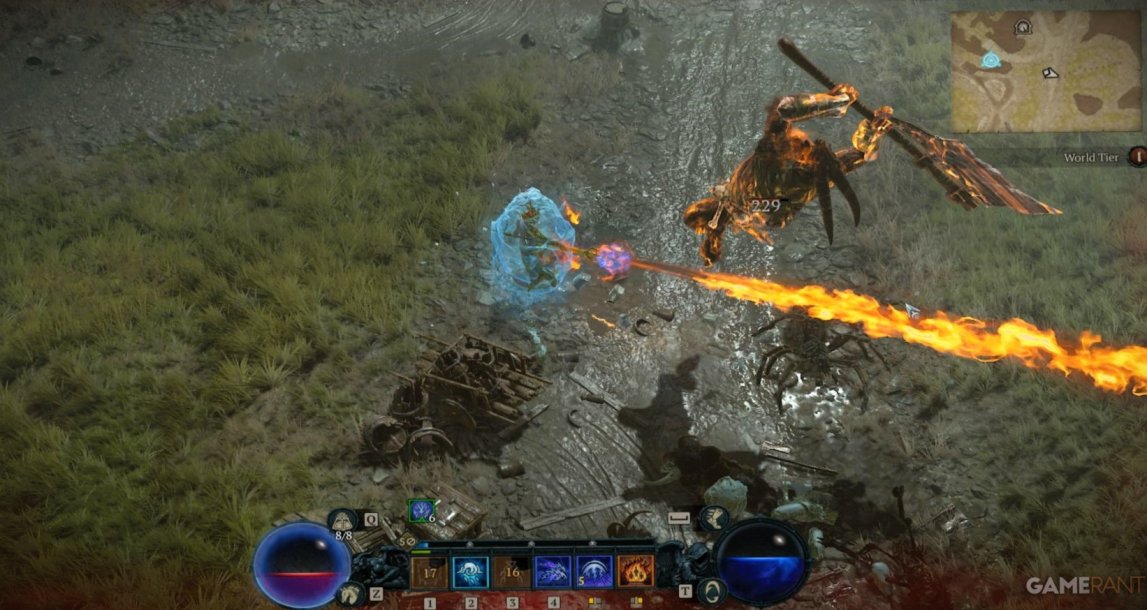
Since the release of the original Diablo in 1997, fans have been captivated by the stories of battling monstrous evils crafted by developer Blizzard. The game was initially conceived by a company called Condor, but its name changed to Blizzard North only nine months before the first Diablo was released. Published on PC by Blizzard Entertainment, the saga of the clash between Heaven and Hell has been grim and hauntingly dark from the start, and Diablo 4 surpasses nearly anything experienced before it. Everything seamlessly fits together, from the narrative to the visuals to the character design, making each aspect of the game feel perfectly suited to the world constantly threatened by the forces of darkness and light.
The game kicks off with an opening cutscene featuring the player on a horse in a snowy landscape. Keen observers will quickly notice that their created character is actually present in the cutscene, showcasing every scar and wild hairstyle prominently. It's the game's initial indication that Blizzard is making a significant effort to immerse the player more deeply into the world of Sanctuary. While player-created characters appearing in cutscenes aren't a novel concept in gaming, it's refreshing to see them showcased with the quality that only Blizzard can deliver. The voice acting for every main and side character is also excellent, reinforcing that Blizzard still produces some of the best movie-quality cutscenes in gaming.
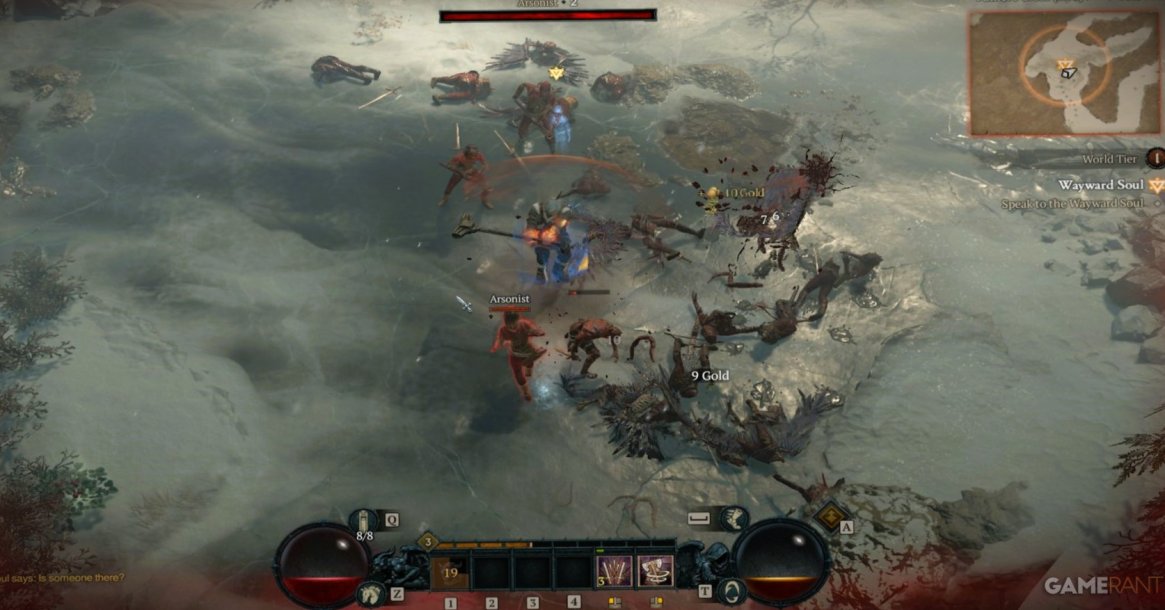
Diablo 4 showcases some of Blizzard's finest storytelling to date. It's engaging enough to hope that the majority of players can experience it without spoilers, as it crafts an extraordinary tale where the wandering player gradually becomes the main focus. There are moments of graphic violence, enough to make some players wince, but in the realm of Diablo, blood and gore are closely intertwined with most of its narratives. The story begins with a modest focus, steadily building and concluding while effectively laying the groundwork for the inevitable future stories. It also stands out as one of the longer, if not the longest, campaign stories in any Diablo game to date. Throughout the journey, players encounter various main and side characters, although they are mostly visually present and don't contribute significantly to combat. Some provide enjoyable audio cues during fights or travels with the player's character, and users might feel a bit melancholic as these characters move on to the next story beat.
Players need to accept that the story unfolds in a rather linear fashion, devoid of significant choices that could dramatically alter the narrative. Some argue that in the present era, giving players more opportunities to influence the story would enhance their sense of impact on the world. Instead of opting for a larger branching-style story, Blizzard chose to guide the player through the adventure they wanted to tell, allowing them to focus on delivering a compelling tale from start to finish. Those unfamiliar with previous Diablo lore may feel a bit lost with the name-dropping and callbacks to earlier games, but it's not challenging to grasp the nuances and overall essence of the world's history and appreciate what Diablo 4 presents.

The immersive feel of Diablo 4 is heightened when delving into the extensive array of side quests the game offers. These quests can originate from various NPCs scattered across the lands and cities or result from a dropped item after defeating an enemy. Each one, on its own, can unfold into a compelling tale. The stories told through these side missions are typically more compact and focused, but some can evolve into multi-step quests that leave a lasting impression.
Beyond the cutscenes, and regardless of whether players opt to download the high-resolution texture pack provided with Diablo 4, the game itself boasts stunning visuals. If users meet the required specifications for the high-resolution texture pack, it enhances an already beautiful game even further, although the difference may be most noticeable when zooming the camera in as far as possible. Flickering torches cast just enough light to reveal dark corners of dungeons, ominous trees extend their branches in an almost malevolent manner, and ground textures featuring dirt, sand, and grass look remarkable. Enemies showcase designs straight from a tormented and hellish landscape. Even well-lit sections of mountain pathways or the beaches and tide pools along the coastline are meticulously crafted and delightful to behold.
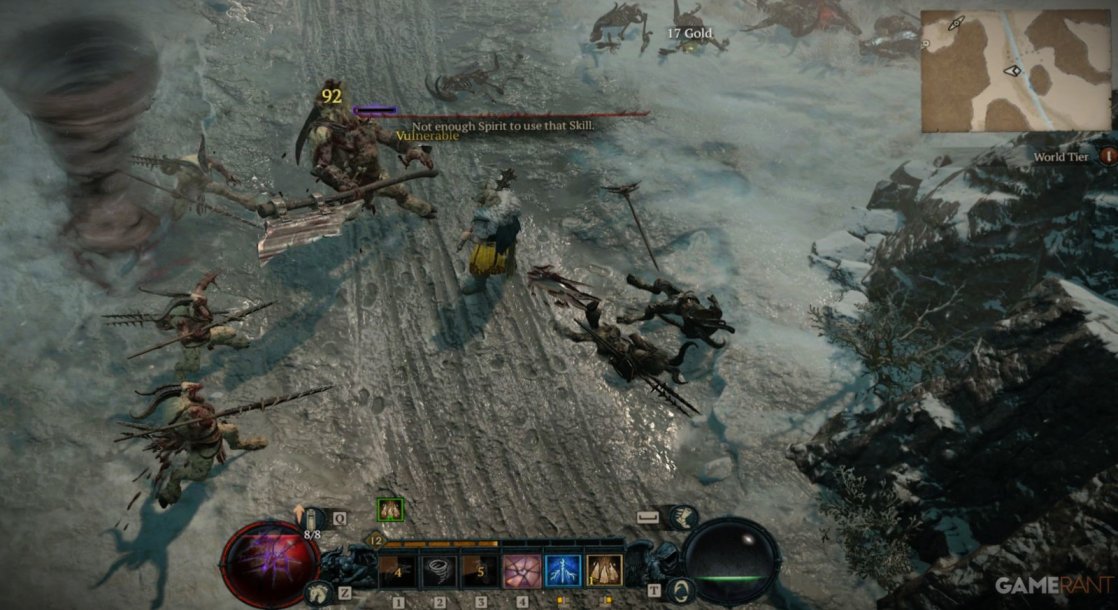
Lillith, the daughter of Mephisto and the mother of Sanctuary, stands out with a striking design in Diablo 4, exuding an intimidating presence that's hard not to be impressed by. The improvement in enemy designs extends to some of the best-looking bosses seen in any Diablo game, providing a satisfying challenge even at the highest difficulty. The game features a variety of enemies in different areas, offering players the enjoyment of encountering new foes as they progress through Sanctuary. One graphical choice that may bother some players is the light source seemingly attached to the front of the player's character, creating a shadow behind them from an invisible light source. It may look peculiar not to see the origin of the light, but this becomes less noticeable over time. The game also incorporates a day and night cycle that alters the landscape's appearance, although it never gets dark enough to obscure visibility.
Diablo 4 effectively utilizes changes in elevation, a feature not every top-down ARPG can execute well. Whether running or galloping over large sand dunes, climbing cliff sides, or standing atop a hill overlooking enemies, it's clear that significant effort has been invested since Diablo 3. While Diablo Immortal touched on this idea, Diablo 4 has almost perfected it. The elevation changes also enable Blizzard to integrate quest steps seamlessly without disrupting the game's flow. However, there were a few missions that became slightly more tedious due to repetitive travel up and down the same set of points. While returning to locations is sometimes necessary, these instances are fortunately infrequent while progressing through the main campaign's stories.

Diablo 4 doesn't just shine with pretty backgrounds and static set pieces; considerable effort and care have gone into character spells and animations. For instance, when a player or enemy is frozen, the frozen entity is encased in icicles that point away from the direction of the attack. Similarly, after succumbing to a fire-based attack, the corpse is engulfed in flames, leaving a charred skeleton on the ground. These details significantly enhance immersion and the sense of being a powerful entity traversing the world. Physical attacks receive equal attention, with enemies neatly sliced in two on larger attacks, and body parts flying through the air, splattering blood upon landing. Each skill in the skill tree serves a purpose, with only a few seeming less useful, though some players may find applications for each one, particularly those causing vulnerability, significantly boosting a player's damage against various monsters.
Watching enemies get launched into the air and land forcefully as a result of an attack or spell brings a special joy. However, some players might notice the quick disappearance of blood, gore, and bodies after being struck down. Whether due to Blizzard's need to eliminate static elements to prevent framerate issues or other technical considerations, it's challenging to determine, but it's unlikely to be a dealbreaker for most despite its brief presence.
Blizzard's ability to create diverse characters across various games is well-known, and Diablo 4's character designs deserve praise. Choosing between the Rogue, Necromancer, Barbarian, Druid, or Sorceress has never been more challenging, as each feels rewarding to play. While the basic skill trees are relatively smaller compared to some other ARPGs, there are still plenty of choices. Pure casters, hybrid caster/melee, and strictly melee classes all make a return. Even without some of the antics from previous classes, like the Diablo 3 Witchdoctor's frogs and chicken spells, the current offerings are already enjoyable. Each class has a unique aspect, such as the Necromancer's Book of the Dead, enabling them to choose abilities for their minions or buff themselves, or the Barbarian's ability to equip four melee weapons simultaneously while also having an expertise menu for individual skill customization. These nuanced differences between characters make selecting a class genuinely challenging.

Long-term Diablo players will likely find the wealth of activities outside the story missions quite exciting. Players can capture various strongholds scattered throughout Sanctuary, engage in world-boss fights, explore and search for the Altars of Lillith, build up region renown, tackle dynamic and brief quests in different areas, and even participate in PVP. This list doesn't encompass activities that unlock after completing Diablo 4's story, like Whispers of the Dead's continually shifting missions, or the options available after unlocking World Tier 3 and Tier 4. Needless to say, the range of activities expands even further. It will take a considerable amount of time before players might feel there's nothing left to do. Even after completing the story, large sections of the map may remain unexplored if players didn't venture far off the questing paths. More exploration is seldom a drawback, especially in a game with finite edges.
However, amidst the variety of activities, players may encounter a sense of repetition that could become bothersome. The majority of quests and missions involve mindless killing to complete. Whether it's taking down high-value targets, gathering soul essence by killing specific monsters, charging crystals by killing enemies within a certain radius, or obtaining items by killing enemies, there might be a level of burnout. It's easy to default to the notion that "this is Diablo, of course, it's mostly killing." While the lore-filled world is undeniably brutal and deadly, some players may find this repetition tedious. Yet, it's challenging to envision an alternative that wouldn't impact the player's sense of immersion while playing.
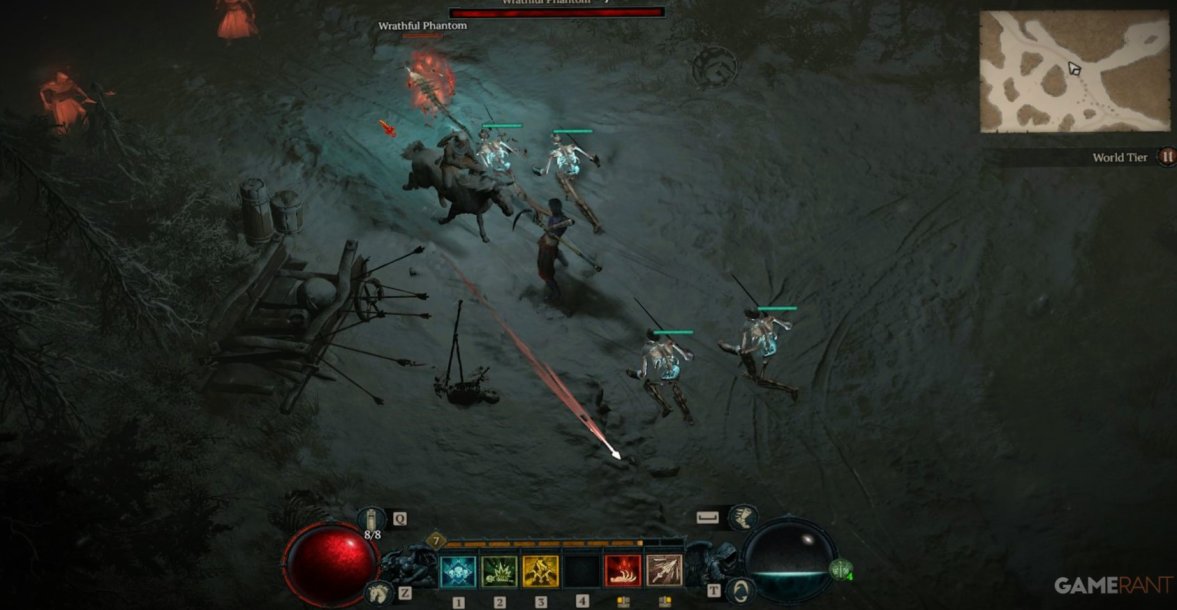
Most players will likely appreciate Blizzard's decision to scale the world upwards to the player's level. After reaching the minimum level for an area, returning to it allows users to find and grind for items appropriate for their character's level. Some sections of the map pose greater danger until the recommended minimum level is reached, making exploration more challenging at lower levels. However, this challenge is somewhat softened by designing the lower-level locations to be sizable areas themselves. While progressing through the story for the first time, players are guided around the map, but if they opt to rush through story missions, there will be a point where some grinding or side quest completions become necessary to avoid immediate defeat upon entering a higher-level area.
This becomes particularly noticeable when taking advantage of one of Blizzard's key decisions in Diablo 4: allowing new or existing characters to jump directly into the endgame after completing the main campaign story once. This means brand-new characters can start their endgame grind from level 1 if the player desires, making it one of the sequel's standout features. Blizzard has truly aimed to provide players with as much choice as possible in how they approach playing the game. All of these options are experienced before even delving into Diablo 4's crafting systems or the Paragon Board.
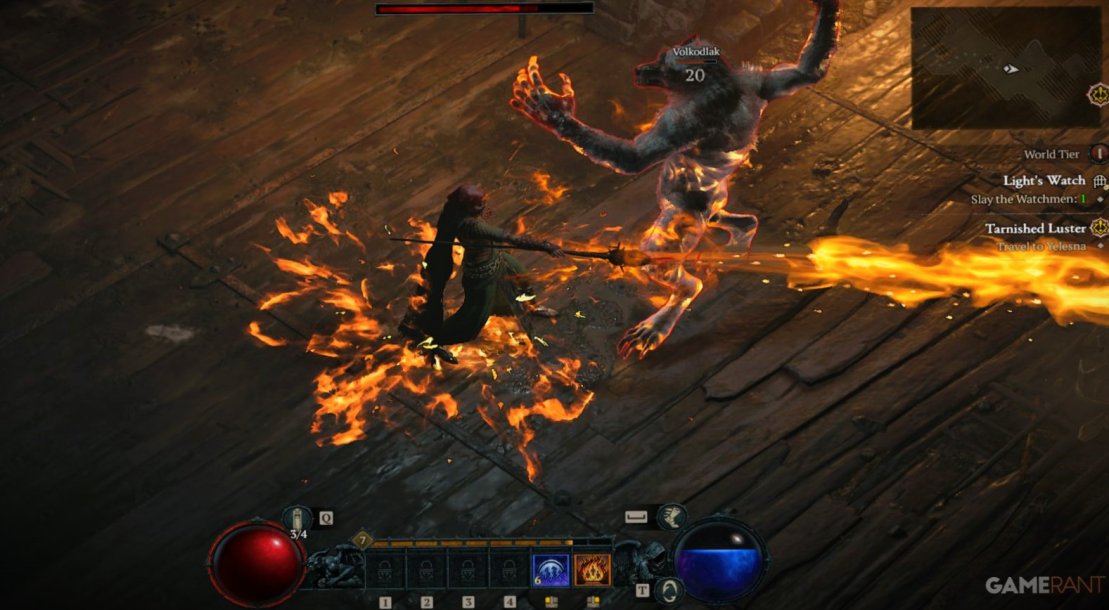
Crafting has undergone a substantial overhaul since Diablo 3. Players can now extract aspects from legendary items and hold onto them to later insert into new items. Inserting these aspects into rare items upgrades them into legendary items, adding a significant layer of depth to build crafting. Legendary items offer a plethora of different abilities and skills. The ability to 'level-up' a rare item into a legendary one aims to reduce the need for incessant selling or deconstructing, although players still need to engage in these activities to gather materials for upgrades and armor purchases. In the review build of the game, the prices for armor and weapons felt notably high, and they scale with the player's level.
The newly introduced Paragon Board is a dream system for build crafters. Starting at level 50 and earning a total of 220 points, players unlock a board with interconnected tiles separate from the skill tree. The beginner board is filled with common, magic, rare, and other nodes, each providing incremental boosts for skills, spells, or stats. While it may seem overwhelming initially, Blizzard expresses confidence that players will have a clear direction for their characters by the time they reach the Paragon Boards. The game strikes a perfect balance in offering players a multitude of options.
These systems, from the diverse crafting mechanisms to the Paragon Board, seamlessly and efficiently complement each other, creating an impressive synergy in-game. Each system effortlessly flows into the next, and despite the potential for choice paralysis due to the multitude of options, the sheer variety available to players is striking for a Diablo game. While other games may have larger skill trees, the interconnected systems here are so well-integrated that it's genuinely impressive. Blizzard aims for players to have chosen their character's direction by the time they reach the second Paragon Board.
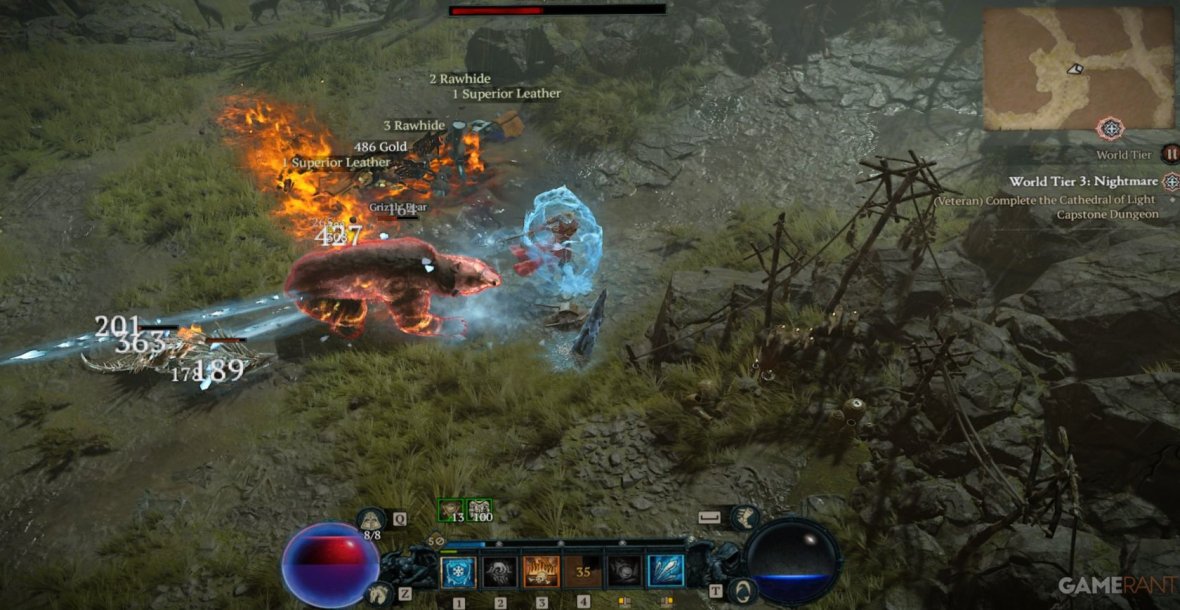
Blizzard has distilled two decades of game design insights into Diablo 4. The abundance of activities and the multitude of build choices reflect the expertise of a company that has weathered both triumphs and setbacks in game development, internalizing valuable lessons along the way. Every aspect of Diablo 4 exudes a sense of passion, with love evident in each system and corner of Sanctuary. With the series' first simultaneous release on PC and consoles, Diablo players are rejoining the battle between Heaven and Hell, and it's likely that the fight will endure for many years to come.
Last edited:
